My research contribution includes 60+ publications, of which 13 are first-author works (h-index: 26). Have a look at my ADS library for the full list.
Highlights:
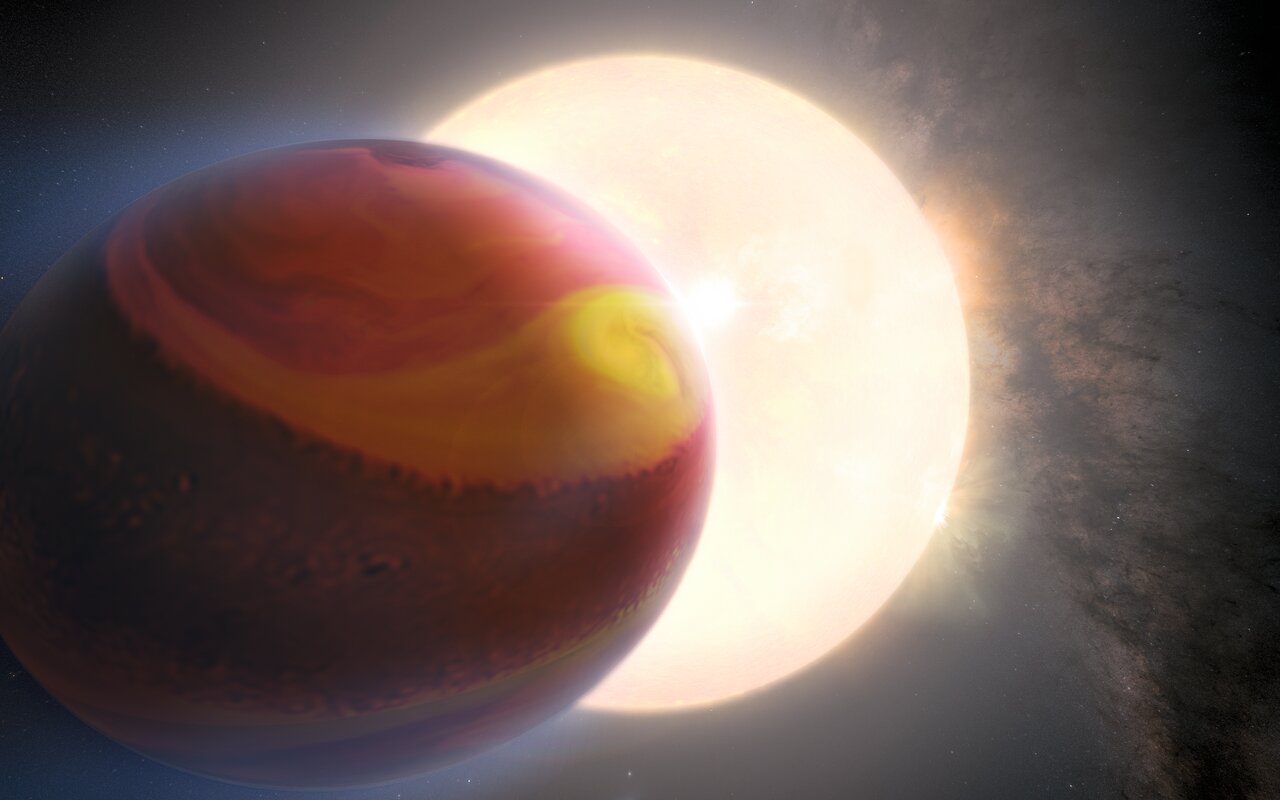 Hubble observes a changing exoplanet atmosphere (Jan 2024): An international team of astronomers has assembled and reprocessed observations of the exoplanet WASP-121 b that were collected with the NASA/ESA Hubble Space Telescope in the years 2016, 2018 and 2019. This provided them with a unique dataset that allowed them not only to analyse the atmosphere of WASP 121 b, but also to compare the state of the exoplanet’s atmosphere across several years. They found clear evidence that the observations of WASP-121 b were varying in time. The team then used sophisticated modelling techniques to demonstrate that these temporal variations could be explained by weather patterns in the exoplanet’s atmosphere. ESA PR - NASA PR - DiRAC PR - Article
Hubble observes a changing exoplanet atmosphere (Jan 2024): An international team of astronomers has assembled and reprocessed observations of the exoplanet WASP-121 b that were collected with the NASA/ESA Hubble Space Telescope in the years 2016, 2018 and 2019. This provided them with a unique dataset that allowed them not only to analyse the atmosphere of WASP 121 b, but also to compare the state of the exoplanet’s atmosphere across several years. They found clear evidence that the observations of WASP-121 b were varying in time. The team then used sophisticated modelling techniques to demonstrate that these temporal variations could be explained by weather patterns in the exoplanet’s atmosphere. ESA PR - NASA PR - DiRAC PR - Article
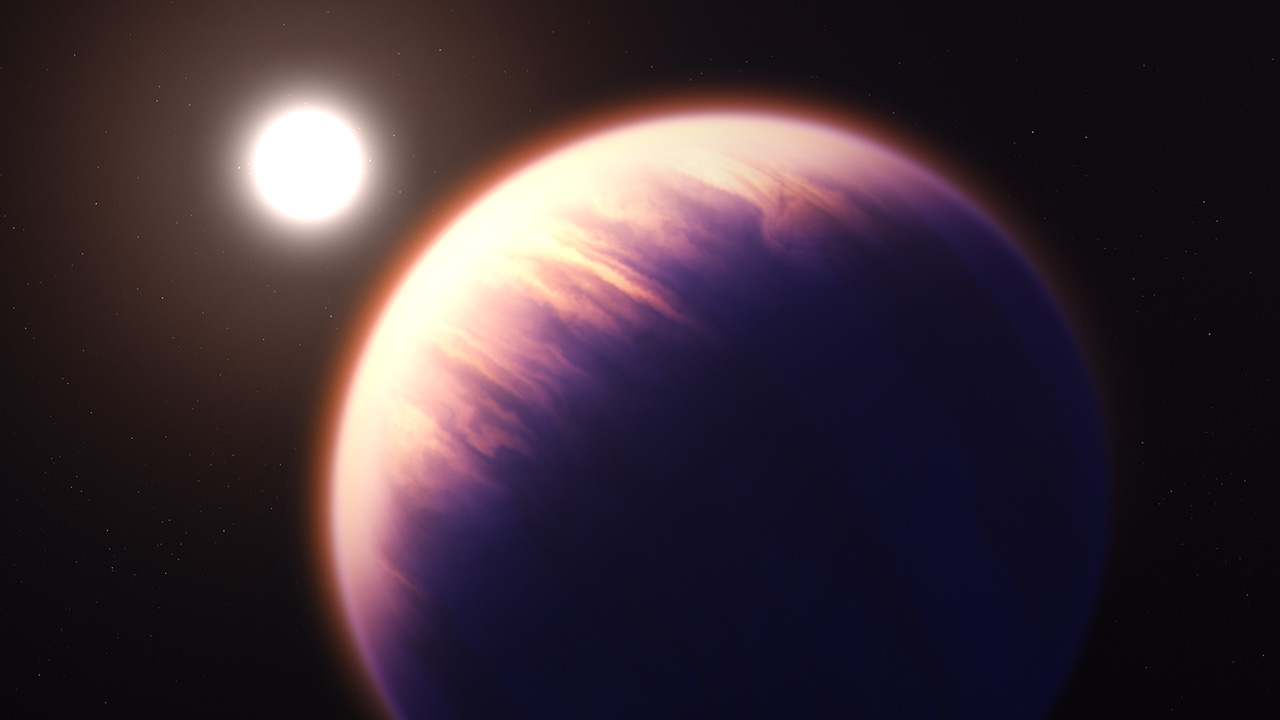 NASA’s Webb Reveals an Exoplanet Atmosphere as Never Seen Before (Dec 2022): WASP-39 b is a planet unlike any in our solar system – a Saturn-sized behemoth that orbits its star closer than Mercury is to our Sun. This exoplanet was one of the first examined by NASA’s James Webb Space Telescope when it began regular science operations. The results have excited the exoplanet science community. Webb’s exquisitely sensitive instruments have provided a profile of WASP-39 b’s atmospheric constituents and identified a plethora of contents, including water, sulfur dioxide, carbon monoxide, sodium and potassium. The findings bode well for the capability of Webb’s instruments to conduct the broad range of investigations of all types of exoplanets, including small, rocky worlds like those in the TRAPPIST-1 system. NASA PR - ERS Article
NASA’s Webb Reveals an Exoplanet Atmosphere as Never Seen Before (Dec 2022): WASP-39 b is a planet unlike any in our solar system – a Saturn-sized behemoth that orbits its star closer than Mercury is to our Sun. This exoplanet was one of the first examined by NASA’s James Webb Space Telescope when it began regular science operations. The results have excited the exoplanet science community. Webb’s exquisitely sensitive instruments have provided a profile of WASP-39 b’s atmospheric constituents and identified a plethora of contents, including water, sulfur dioxide, carbon monoxide, sodium and potassium. The findings bode well for the capability of Webb’s instruments to conduct the broad range of investigations of all types of exoplanets, including small, rocky worlds like those in the TRAPPIST-1 system. NASA PR - ERS Article
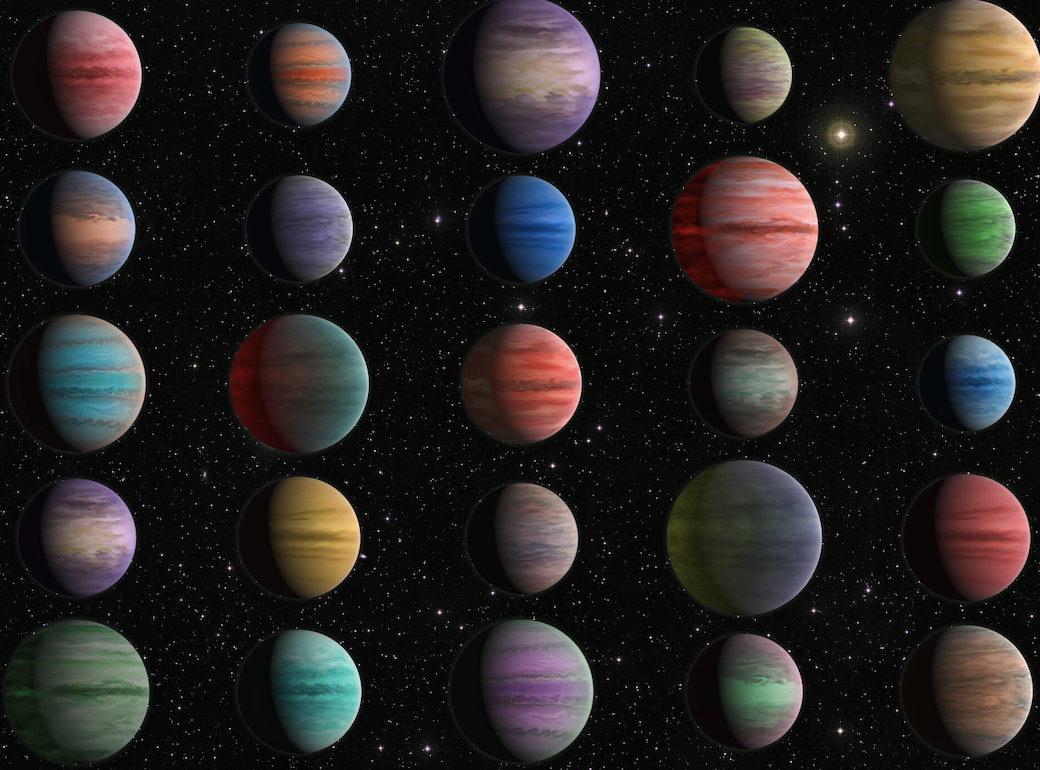 Hubble observations used to answer key exoplanet questions (Apr 2022): Archival observations of 25 hot Jupiters by the NASA/ESA Hubble Space Telescope have been analysed by an international team of astronomers, enabling them to answer five open questions important to our understanding of exoplanet atmospheres. Amongst other findings, the team found that the presence of metal oxides and hydrides in the hottest exoplanet atmospheres was clearly correlated with the atmospheres’ being thermally inverted. ESA PR - UCL PR - Article
Hubble observations used to answer key exoplanet questions (Apr 2022): Archival observations of 25 hot Jupiters by the NASA/ESA Hubble Space Telescope have been analysed by an international team of astronomers, enabling them to answer five open questions important to our understanding of exoplanet atmospheres. Amongst other findings, the team found that the presence of metal oxides and hydrides in the hottest exoplanet atmospheres was clearly correlated with the atmospheres’ being thermally inverted. ESA PR - UCL PR - Article
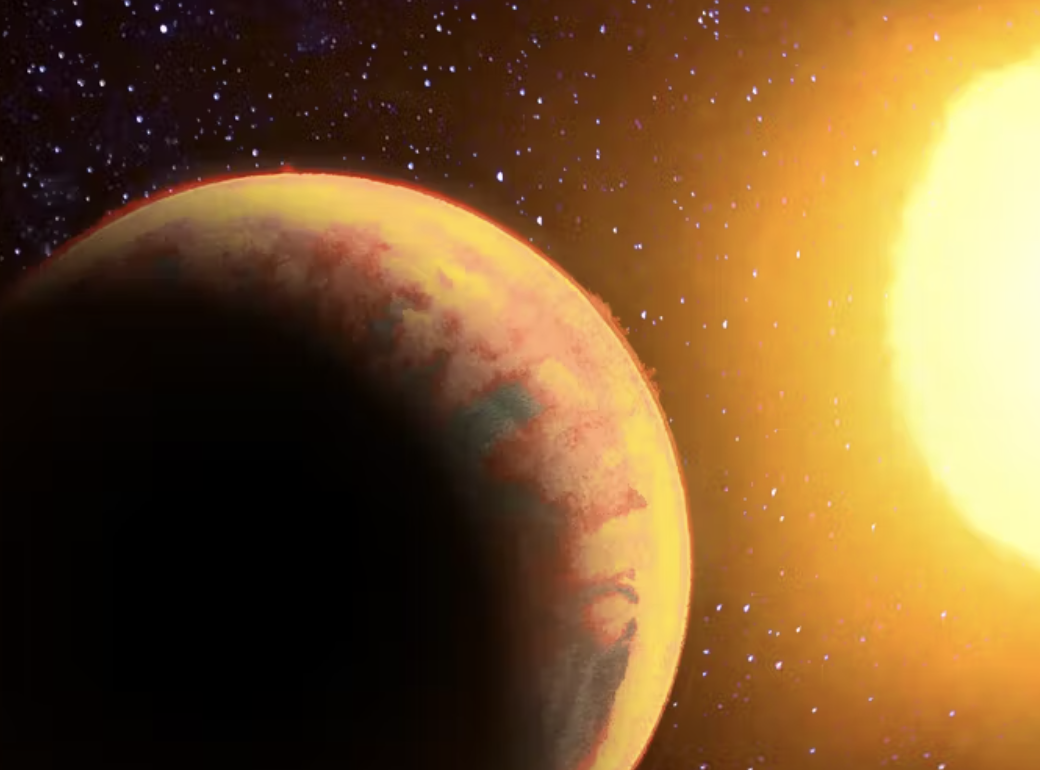 AI can reliably spot molecules on exoplanets – and might one day even discover new laws of physics (Dec 2021): AI experts found that a well-trained AI relies heavily on physical phenomena, such as unique spectroscopic fingerprints – just like an astronomer would. The team at UCL developed the first method to have a sneaky peek into so-called “AI black-boxes”, allowing them to evaluate what the AIs have learnt. With these tools, researchers now can not only use AIs to speed up their analysis of exo-atmospheres, but they can also verify that their AI uses well-understood laws of nature. The Conversation - Article
AI can reliably spot molecules on exoplanets – and might one day even discover new laws of physics (Dec 2021): AI experts found that a well-trained AI relies heavily on physical phenomena, such as unique spectroscopic fingerprints – just like an astronomer would. The team at UCL developed the first method to have a sneaky peek into so-called “AI black-boxes”, allowing them to evaluate what the AIs have learnt. With these tools, researchers now can not only use AIs to speed up their analysis of exo-atmospheres, but they can also verify that their AI uses well-understood laws of nature. The Conversation - Article
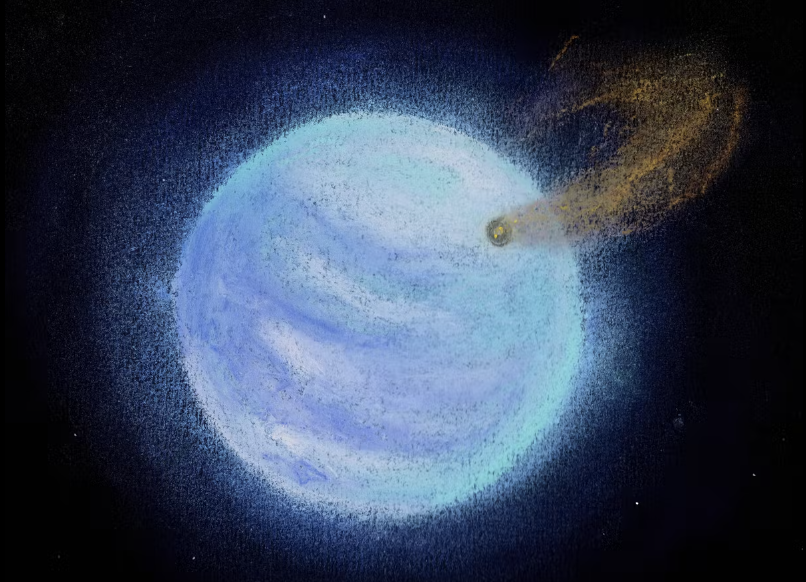 How can some planets be hotter than stars? We’ve started to unravel the mystery (Mar 2021): The hottest exoplanet known so far is Kelt-9 b, which was discovered in 2016. In our study, we used publicly available data, taken by the Hubble Space Telescope, to obtain the eclipse spectrum of this planet. We then used open-source software to extract the presence of molecules and found there were plenty of metals (made from molecules). This discovery is interesting as it was previously thought that these molecules would not be present at such extreme temperatures – they would be broken apart into smaller compounds. This implies some complex chemical and dynamical processes must take place in KELT-9 b atmospheres. The Conversation - Article
How can some planets be hotter than stars? We’ve started to unravel the mystery (Mar 2021): The hottest exoplanet known so far is Kelt-9 b, which was discovered in 2016. In our study, we used publicly available data, taken by the Hubble Space Telescope, to obtain the eclipse spectrum of this planet. We then used open-source software to extract the presence of molecules and found there were plenty of metals (made from molecules). This discovery is interesting as it was previously thought that these molecules would not be present at such extreme temperatures – they would be broken apart into smaller compounds. This implies some complex chemical and dynamical processes must take place in KELT-9 b atmospheres. The Conversation - Article
Recent first-author publications (updated 02/03/23):
-
12) Changeat, Skinner et al. (2024) - Is the atmosphere of the ultra-hot Jupiter WASP-121b variable?, ApJS (arXiv)
-
11) Changeat, Yip (2023) - ESA-Ariel Data Challenge NeurIPS 2022: introduction to exo-atmospheric studies and presentation of the Atmospheric Big Challenge (ABC) Database, RASTI 2 1 45–61 (arXiv)
-
10) Changeat, Edwards et al. (2022) - Five key exoplanet questions answered via the analysis of 25 hot Jupiter atmospheres in eclipse, ApJS 260 3 (arXiv)
-
9) Changeat (2022) - On spectroscopic phase-curve retrievals: H2 dissociation and thermal inversion in the atmosphere of the ultra-hot Jupiter WASP-103 b, AJ 163 106 (arXiv)
-
8) Changeat et al. (2022) - Disentangling Atmospheric Compositions of K2-18 b with Next Generation Facilities, ExA 53 391 (arXiv)
-
7) Changeat et al. (2021) - An exploration of model degeneracies with a unified phase curve retrieval analysis: The light and dark sides of WASP-43 b, ApJ 913 73 (arXiv)
-
6) Changeat & Edwards (2021) - The Hubble WFC3 Emission Spectrum of the Extremely-Hot Jupiter, KELT-9b, ApJ 907 22 (arXiv)
-
5) Changeat et al. (2020c) - KELT-11 b: Abundances of water and constraints on carbon-bearing molecules from the Hubble transmission spectrum, AJ 160 260 (arXiv)
-
4) Changeat & Al-Refaie (2020) - TauREx3 PhaseCurve: A 1.5D model for phase curve description, ApJ 898 155 (arXiv)
-
3) Changeat et al. (2020b) - Alfnoor: A Retrieval Simulation of the Ariel Target List, AJ 160 80 (arXiv)
-
2) Changeat et al. (2020a) - Impact of planetary mass uncertainties on exoplanet atmospheric retrievals, ApJ 896 107 (arXiv)
-
1) Changeat et al. (2019) - Towards a more complex description of chemical profiles in exoplanets retrievals: A 2-layer parameterisation, ApJ 886 39 (arXiv)
Major co-authored publications:
-
11) Edwards, Changeat et al. (2023) - Exploring the Ability of Hubble Space Telescope WFC3 G141 to Uncover Trends in Populations of Exoplanet Atmospheres through a Homogeneous Transmission Survey of 70 Gaseous Planets (arXiv)
-
10) Yip, Changeat et al. (2022) - To Sample or Not To Sample: Retrieving Exoplanetary Spectra with Variational Inference and Normalising Flows (arXiv)
-
9) Barstow, Changeat et al. (2022) - A retrieval challenge exercise for the Ariel mission (arXiv)
-
8) Al-Refaie, Changeat et al. (2022) - A comparison of chemical models of exoplanet atmospheres enabled by TauREx 3.1 (arXiv)
-
7) Ito, Changeat et al. (2021) - Detectability of Rocky-Vapour Atmospheres on Super-Earths with Ariel (arXiv)
-
6) Yip, Changeat et al. (2020) - Peeking inside the Black Box: Interpreting Deep Learning Models for Exoplanet Atmospheric Retrievals (arXiv)
-
5) Edwards, Changeat et al. (2020d) - Hubble WFC3 Spectroscopy of the Habitable-zone Super-Earth LHS 1140 b (arXiv)
-
4) Yip, Changeat et al. (2020) - On The Compatibility of Ground-based and Space-based Data: WASP-96 b, An Example (arXiv)
-
3) Edwards, Changeat et al. (2020b) - ARES I: WASP-76 b, A Tale of Two HST Spectra (arXiv)
-
2) Edwards, Changeat et al. (2020a) - Original Research By Young Twinkle Students (ORBYTS): Ephemeris Refinement of Transiting Exoplanets (arXiv)
-
1) Al-Refaie, Changeat et al. (2020) - TauREx III: A fast, dynamic and extendable framework for retrievals (arXiv)